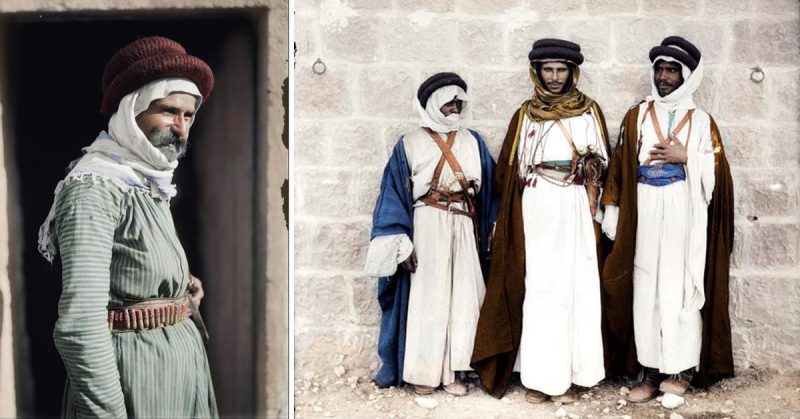By Mark McConville and Michael Carroll
Stunning photographs of the native Bedouin people of Palestine at the turn of the 20th Century have been brought to life in color.
Among the images is a female ‘quack’ doctor in Jericho, known as such because she lacked legitimacy to practice medicine.
Additional shots show a young man playing a bagpipe in the street, whilst another depicts a warrior on horseback carrying a traditional Az-Zaġāyah hunting spear.
The vivid color photographs are the work of French bank technician Frederic Duriez, from Angres, who caringly brought the photos into the 21st century.
“The following photos were taken at the end of 19th century,” he said.
“They show the Bedouins during the change. When modern governments took control of the original desert, many Bedouins were forced to abandon their purely nomadic lifestyle and adopt a semicircular or seated, urban way of life.
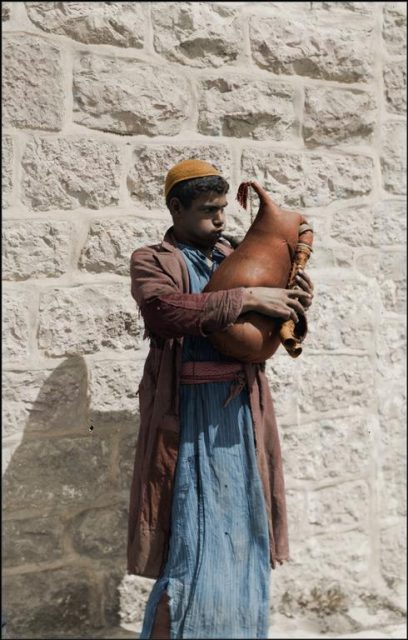
“These photos are beautiful. They date from 1898, and yet you would even believe in black and white that they are current. The Bedouin dress and customs have not changed much even today.”
The Bedouin is a grouping of nomadic Arab peoples who have historically inhabited the desert regions in North Africa, the Arabian Peninsula, Iraq, and the Levant.
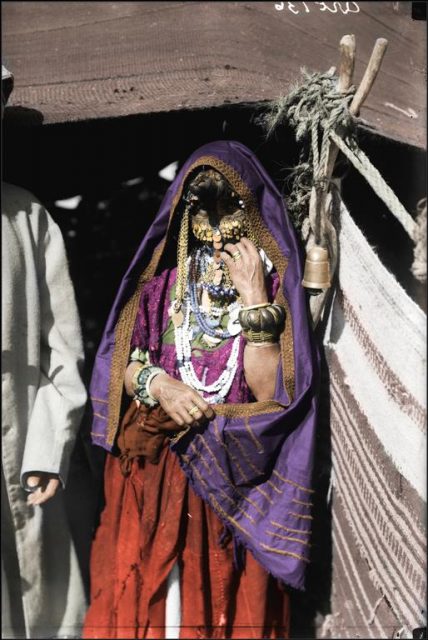
While many Bedouins have abandoned their nomadic and tribal traditions for a modern urban lifestyle, many retain important elements of the traditional Bedouin culture. For example, many still retain the traditional ʿašāʾir clan structure, traditional music, poetry, dances (such as “saas”), and many other cultural ancient practices and concepts.
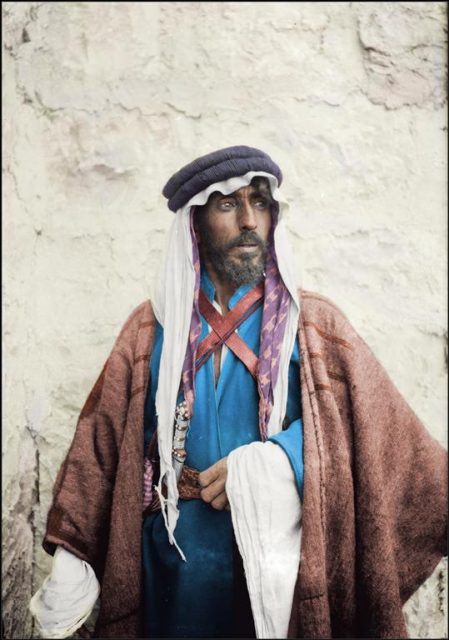
Urbanised Bedouin people often organize cultural festivals. These are usually held several times a year, and at these festivals they gather with other Bedouins to partake in, and learn about, various Bedouin traditions. From poetry recitation and traditional sword dances to playing traditional instruments, and even classes teaching traditional tent knitting, people come from all around to join in this celebration and keep traditional culture alive in the 21st century.
For many, traditions like camel riding and camping in the deserts have come into the 21st century alongside urbanization and progress. Camel riding and traditional desert camping are still popular leisure activities for urbanized Bedouins who live within close proximity to deserts or other wilderness areas.
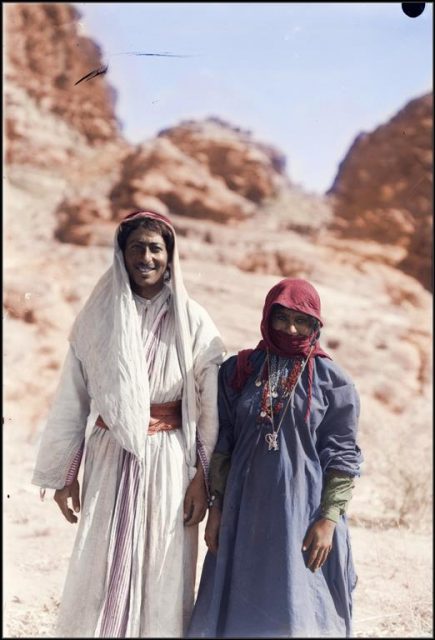
Frederic explained why he chose to colorize these images. He also spoke with feeling and emotion about his favorite piece of the whole breathtaking set, and shared his deeper reasons for undertaking this amazing project.
“I wanted to show another face of the Arab world than the one that is showed today,” he added.
“My favourite image is the Bedouin couple in front of tent – people from the Adwan tribe – because this was the one that took longest to colorize and it was the most complex too.
“It can range from two hours to colorize a simple portrait to seven or eight hours for an image with more details and character. In addition, there is also historical research to undertake.
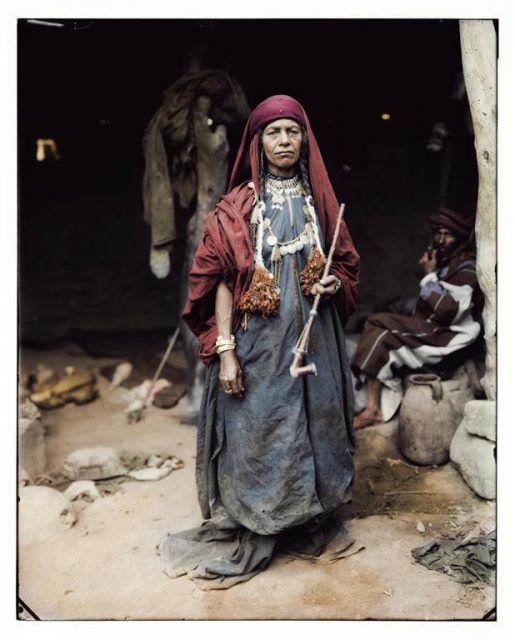
Images like these are featured in British author Michael D. Carroll’s new book on the colorization of historical images. For more information visit Amazon.
Michael D. Carroll is a journalist and author with a particular interest in historical photography.
From his base in Birmingham, UK he directs bespoke press agency Media Drum World, and through his work at the agency, Michael came into contact with the thriving community of colorisors of historical images.
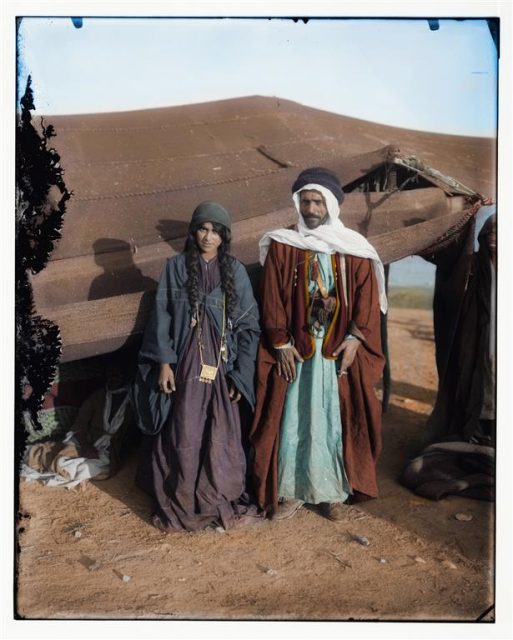
After placing several colourised history features into the national newspapers in the UK, he enlisted the support of this community to publish Retrographic, the first book to present a specially curated selection of iconic historical images in living color.
With the support of ambassadors from the world’s first society for photographers, the Royal Photographic Society, UK, images and reviews on Retrographic have been featured in newspapers and online zines, including the Daily Mail, Telegraph, Times, Fstoppers, War History Online, and ePHOTOzine.
To join Retrographic visit Facebook .
https://www.youtube.com/watch?v=dvvZZVPrkdY
